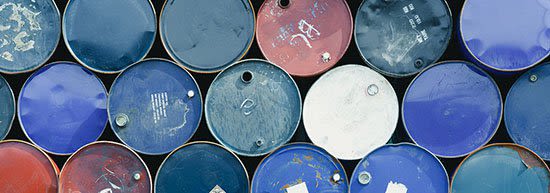
Do Hazardous Waste Regulations Apply to Your Business?
If your business requires the use of cleaning solvents, or even if it relies on electronic components such as computers, then you’re most likely using what are classified as hazardous materials. Does your business generate hazardous waste, and if so, do you understand and comply with the laws governing such materials?
If you’re operating a business in or around Irvine and greater Orange County, California, bring your questions to William B. Hanley, Attorney at Law, whose 40 years of experience dealing with business and environmental law can help you remain in full compliance and avoid potential fines and citations.
Determining If Waste is Hazardous
Hazardous waste can be liquids, solids, or gases that can cause damage to people or the environment. Wastes can be the byproduct of the manufacturing process, discarded used materials, or unused commercial products, such as cleaning fluids (solvents) or pesticides. The four characteristics of hazardous waste are ignitability, corrosivity, reactivity, and toxicity.
The Resource Conservation and Recovery Act (RCRA) of 1976 created a nationwide framework for defining and regulating what came to be known as solid waste, also called hazardous waste. To help in this process, the Environmental Protection Agency (EPA) enumerates known forms of hazardous waste in four published lists, known as the F, K, P, and U Lists.
If you want to determine if a substance you work with, or which is produced during the normal operations of your business, is deemed hazardous, you can consult these lists. The EPA also publishes a list of substances that are excluded from regulation.
Which Type of Generator Are You?
RCRA regulates hazardous waste from its point of origin — called a “generator” — to its point of disposal. A generator is defined as “any person, by site, whose act or process produces hazardous waste.” Note the components, which can obviously overlap — site, person, act/process:
Site: Where the generation of hazardous waste takes place. The EPA assigns a hazardous identification number to each site where waste is generated in sufficient quantity to be regulated.
Person: This can mean an individual or a group of persons who form a larger entity, including a partnership, corporation, or even a municipality or a state itself.
Act/Process: This refers to an ongoing or established method of doing something that produces hazardous waste, regardless of the person who initiates the act or process.
The EPA also breaks down a generator into three classes depending on the amount of waste produced:
VSQGs (Very Small Quantity Generators): You generate less than 220 pounds of hazardous waste a month and thus face only basic waste regulations.
SQGs (Small Quantity Generators): You generate between 220 and 2,200 pounds of waste a month and are subject to broader regulations.
LQGs (Large Quantity Generators): You generate more than 2,200 pounds a month and are thus subject to more extensive regulations.
NOTE: California classifications and regulations are different. See the section below titled “Differences Between California & Federal Compliance.”
Complying with Regulations
The first step is to determine which category of generator your business falls into. If you’re a VSQG, then you must follow three fundamental requirements. SQGs and LQGs obviously have higher compliance standards, and thus face more liability.
The core requirements for a VSQG are:
Identify all hazardous waste that you generate
Store no more than 2,200 pounds of waste on your site at any one time
Ensure delivery of your waste to an off-site disposal or treatment facility
An SQG must obtain an EPA 12-digit identification number, which is used by both the EPA and state agencies to track your waste management. You must use this number when delivering your waste to a management site.
An LQG must also obtain an identification number, but in addition, is subject to more stringent requirements, such as containment and storage standards for hazardous materials and the need to develop an “emergency preparedness and prevention” contingency plan.
Differences Between California & Federal Compliance
California actually began dealing with hazardous waste before the federal government. In 1972, the state passed the California Hazardous Waste Control Law, four years before the RCRA. Over the years, California has enacted hazardous waste requirements that substantially exceed those of the RCRA, including a stringent permit process.
In addition, the regulations are enforced by city and county agencies deputized as Certified Unified Program Agencies (CUPAs), whose standards of enforcement can vary city by city and county by county.
More importantly, California does not have a category for VSQGs and does not exempt any generator because of the size of waste output. The state classifies generators in only two ways: Those who generate 1,000 kg (220 pounds) or more of hazardous waste a month (who must follow LQG standards) and those who generate less than 1,000 kg and must follow SQG standards.
Get Help from an Experienced Attorney
California was one of the pioneers in regulating hazardous waste and its disposal, and the state can be quite proactive in enforcing its standards and regulations. As a business owner, if you don’t plan ahead, you can find yourself being frequently visited and cited by one of the responsible enforcement agencies.
Protect your business by assessing your waste generation and by following state requirements. William B. Hanley, Attorney at Law, has been dealing with business and environmental law issues for four decades. If you’re in Irvine, California, or in the counties of Orange, Los Angeles, or San Diego, call today to help you assess your situation, or to obtain legal counsel if you’re already facing enforcement issues over environmental concerns.